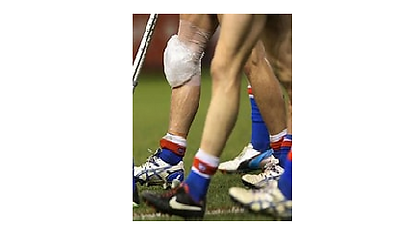
Injury Crisis?
A Deep Dive into Footy's Lower Limb Injury Rates

Compared to other sports, in AF, there are less possibilities to play professionally, with many players quitting due to de-selection and injury. Australian football is prone to both uncommon and frequent injuries, such as hamstring strain and ACL tears, due to its unique character. Injury rates have increased as a result of the sport's evolution, which now involves heavier athletes with higher sprinting demands. The fact that injury rates have risen in spite of improvements in training techniques and injury prevention measures emphasises the continuous difficulties coaches and players faced with managing player performance.

Injuries:
Knee:
As of March 4, 2025, knee injuries were the most common among all 18 AFL clubs, with a total of 28 cases. Carlton had the highest number, with four players affected, followed by Brisbane, Port Adelaide, St Kilda, and West Coast, each reporting three knee injuries

Hamstring:
Hamstring injuries ranked second, with 19 cases. The Western Bulldogs and North Melbourne recorded the highest numbers in this category, with three players each affected.
The hamstring has consistently been one of the most frequently injured body regions in every AFL season since 1992. Both of the primary activities linked to hamstring strain injuries are rapid acceleration and running at maximum speed. Apart from rapid acceleration, running at maximum velocity is another major activity associated with hamstring strain concerns. Players often pick up the ball from the ground while sprinting, which places them at risk by extending their knees, flexing their hips, and bending their trunks. This movement is typically executed under pressure from an opponent, elevating the risk of severe hamstring strains, particularly affecting the proximal biceps femoris intramuscular tendon. Notably, the biceps femoris is the muscle most commonly injured, with the intramuscular tendon frequently involved. Based on EMG, the biceps femoris long head's activity is considerably greater during the early stance phase of a fast run than it is during the terminal mid swing of the maximum-speed run, whereas the semitendinosus muscle exhibits higher activation in the terminal mid-swing. Players with improper technique or weak gluteus maximus may be more susceptible to hamstring strains during the first stance phase of a sprint. The gluteus maximus, the main hip extensor used in running, plays a critical role in maintaining stability and power. A weak gluteus maximus may necessitate more force application from the hamstrings during hip extension, which might put them at risk for injury. Overall, creating successful injury prevention strategies for this sport requires an awareness of the processes and risk factors related to hamstring strains. Ankle injuries were the third most frequent, with six cases in total. Sydney and West Coast had the highest occurrences, each reporting three ankle injuries

Ankle:
Ankle injuries were the third most frequent, with six cases in total. Sydney and West Coast had the highest occurrences, each reporting three ankle injuries.
In both AFL and community-level games, lateral ankle sprains are the most frequent kind of injury; however, syndesmosis ankle sprains make a major contribution to total injury rates. Ankle sprains tend to occur during competitions, in which a player may land on an opponent's foot. A player's foot may potentially become stuck and twisted into eversion when the "pack" falls down. Another common move that leads to injury is when the player plants his foot and spins to throw the ball while being tackled. Ankle sprains can have a major negative impact on a player's performance and long-term effects, such as persistent instability and repeated injuries, which can shorten a player's career.
ACL:
Additionally, ACL injuries were notably severe in Richmond, where five players were affected—the highest among all clubs for pre-season 2025. The majority of these injuries are caused by non-contact mechanisms and frequently happen during preseason training and early in the competition. Early in the playing season and during preseason training is when ACL injuries frequently happen, with non-contact mechanisms responsible for most ruptures. Shoes, knee instability, changing directions, and speed are frequent risk factors.

References
-
AFL Official Injury Update & Injury List - AFL.com.au
-
Lower-limb injury in elite Australian football: A narrative review of kinanthropometric and physical risk factors - ScienceDirect
-
Injuries in Australian Rules Football: An Overview of Injury Rates, Patterns, and Mechanisms Across All Levels of Play - PubMed
-
Hamstring injuries and Australian Rules football: over-reliance on Nordic hamstring exercises as a preventive measure? - PubMed




